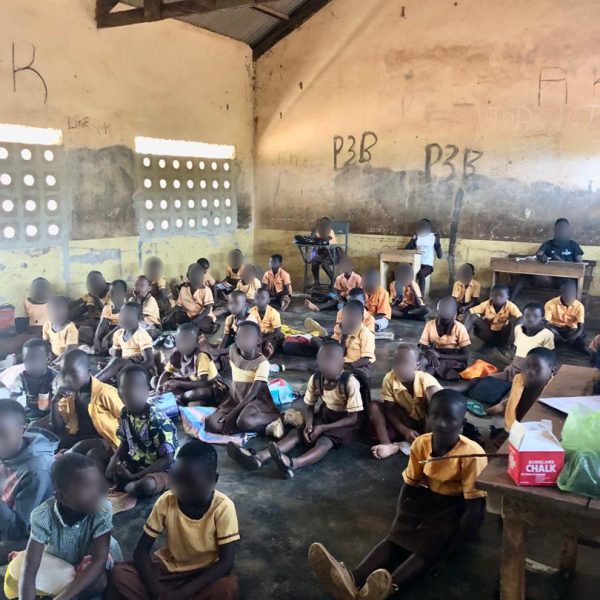
GSET Blogs
A Teacher’s Perspective: The Intersection of Education and Infrastructure as Essentials for Quality Education Delivery.
Inspired by an early career teacher at Babile in the Upper West region of Ghana.
Co-authored by: Noble Selorm Dzreh

In the beautiful greens and strange deserts of Northern Ghana, education suffers, and infrastructure is almost a luxury – all in a system that should transform lives. How can education thrive?
Education is often hailed as the cornerstone of progress, whilst infrastructure serves as the bedrock on which this progress is built. In this blog post I share my experience and perspectives on the intricacies between education and infrastructure, and how investments in both domains are essential for fostering sustainable growth and the overall transformation of any child everywhere in Ghana. I also share how the situation as it is in faraway Babile in the Upper West region in Ghana.
Ready? It’s a long read, but it will be worth your time.
Here we go! As you already know, Education is widely recognized as a fundamental human right and a key driver of socio-economic development. Without any doubt, a well-rounded education empowers individuals with the knowledge, skills, and competencies necessary to navigate this increasingly complex world.
So, by investing in quality education, parents, families, and nations can unlock the potential of their young people, foster innovation, inspire critical thinking, and drive creativity. Most importantly, Education serves as a catalyst, enabling individuals to break the cycle of poverty and achieve their aspirations. Do you agree with me?
While education is the engine of progress, infrastructure provides the necessary support system to ensure its efficacy. Adequate infrastructure in educational institutions, such as schools, colleges, and universities, is essential for creating the just-about-right learning environments. I am not talking about modern classrooms equipped with technology, libraries stocked with resources, and laboratories for hands-on experiments are all integral components of a well-rounded educational infrastructure though these are the ideal. I am talking about roofed, furnished, and resourced classrooms, enough books to support reading and writing activities, and local cafeterias to give children from rural areas such as Babile a feel of these “luxuries” even if these qualify to be referred to in that light.
However, in many rural areas of Ghana and Babile, these things sound like luxury that many young people may never encounter in their rather short experience of education – yes many and many young people in such areas keep dropping out of school for various reasons that this article cannot comprehensively describe.
How does Alhassan, from somewhere like Babile, dream of conquering the world? Even if he’s able, how long can he hold on to the dream or even try to live it?
Quality Education carries in its wings, equity, equality, and accessibility. Every child or learner everywhere in the world deserves an education that is equitable, accessible and provides opportunities for optimum growth and upward development in skill, knowledge, and critical thinking, you mention them.
In Babile, learners are still learning in uncompleted classroom blocks and for many others, under trees threatened by rain in the wet season and terrorized by hot-oven classrooms in the dry season. If you’ve ever visited the Northern region in the dry season, you’ll understand why families spend the night outside their rooms on their open compounds at night – the heat gets unbearable. So, imagine the same conditions in urban Accra or Kumasi, will learners still be in schools? Your guess is as good as mine. These are fallouts that should be considered in our collective efforts as education players to deliver a more inclusive, equitable and accessible education to our young people as a community, NGOs, and a country. This is why communities such as Babile need the right blend of infrastructure, human resources and qualified teachers who are motivated to help change the narrative despite the depressing conditions under which education is “thrown” at children. We can only do more as a country.

The best teachers are needed in such places, the best of resources need to be here and the most attention needs to be given to such communities. We have been left behind for far too long. I am by this article calling on donors, philanthropists, and support groups (NGOs) to strengthen their efforts in supporting education development in rural areas with a sharp focus on infrastructure.
This does not go without recognizing the efforts of educational players who are playing various roles in bridging the gaps and transforming lives.
For anyone interested in helping us advance this journey with Babile where I currently teach and am proud to help transform the lives of these children through education, please reach out to me via hello@g-set.org and let’s together touch the life and give hope to the dying dreams of these talented yet under-resourced children.
Please share until we get the attention this piece deserves. Together let’s take a step forward! Leaving no child behind! Yes, We can!
More Posts


Empowering Education through ICT Integration: A Guide for Ghanaian Teachers



1 thought on “A Teacher’s Perspective: The Intersection of Education and Infrastructure as Essentials for Quality Education Delivery.”
Unfortunately, these are some of the challenges we have to struggle with as teachers having the zeal to impact knowledge. In some cases where the building is there, there is no dest or only few. This was the situation i faced having 3 desks in basic 3 with a population 47.
Our future leaders as such nurses, teachers , lawyers etc have to lied on the flood to study without knowing the challenges this situation could post to them. This is egregious.
It took me to make and repair more than 50 desks for the school, including 9 for my class make it 12 to accommodate the said 47 pupils. These 12 desks promoted 57 students last year and 52 students are currently using them.
We don’t just lack the infrastructures but l think in some cases the maintenance culture is missing.
Not until this becomes a National priority, so and even worst would it be.
I hope this piece go far to meet the right heart.